These photos show the two ships used in the VOCALS field campaign.
Images courtesy of NOAA and IMARPE.
Research Ships Used in the VOCALS Campaign
Two ships are involved in the VOCALS field campaign. Both of the ships carry many special instruments used to study the atmosphere and the ocean. Scientists on the ships make measurements of the clouds and the air above them, and of the sea directly below them. They compare their measurements with others made at the same time by satellites and aircraft overhead. That helps them see the "big picture" of what's going on in the VOCALS study area.
One of the VOCALS ships is the Research Vessel Ronald H. Brown. The Ron Brown is owned by the National Oceanic and Atmospheric Administration (NOAA) in the USA. Its home port is Charleston, South Carolina. The ship is named in honor of the former
Secretary of the U.S. Department of Commerce,
Ronald H. Brown.
The second VOCALS ship is from Peru. It is operated by the Instituto del Mar del Perú (IMARPE). The ship's name is the Research Vessel José Olaya Balandra. José Olaya Balandra was a fisherman who became a national hero during Peru's fight for independence from Spain in the early 1800s. The ship's home port is Lima, Peru.
There are also several buoys off the South American coast that take measurements of the ocean and atmosphere. VOCALS uses data from those buoys, too.
You might also be interested in:
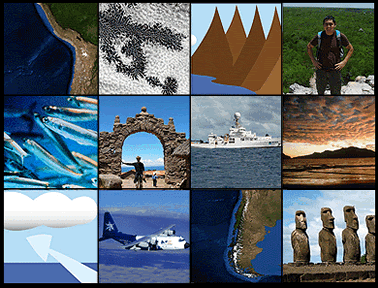
What if you wanted to learn more about the climate of a very large area of the world? What would be involved in studying how the oceans, land, and atmosphere interact? You would need to have a team of
...more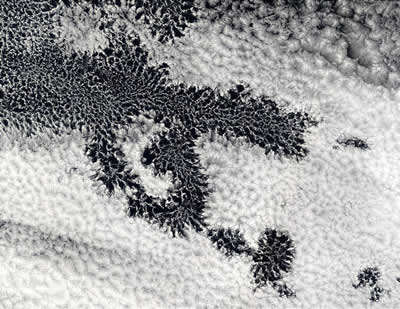
Scientists use lots of data from satellites in the VOCALS field campaign. They also gather data from instruments on ships and on airplanes. When they combine data from satellites, ships, and aircraft,
...more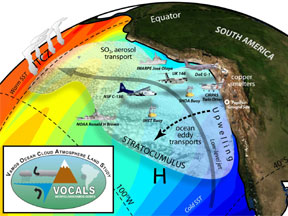
Scientists know that west coasts of Chile and Peru and the Southeastern Pacific Ocean are a very important part of the global climate system. However, they don't completely understand how the oceans, atmosphere,
...more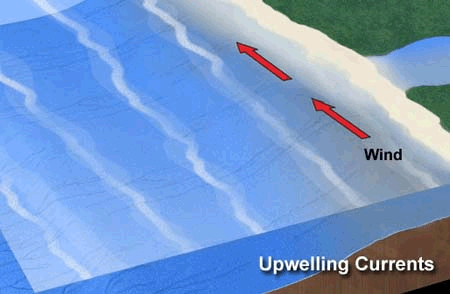
There are many connections between the ocean and the atmosphere in the Southeast Pacific Ocean. Strong winds blow north along the coast of South America. These winds stir up the ocean. That brings cold
...more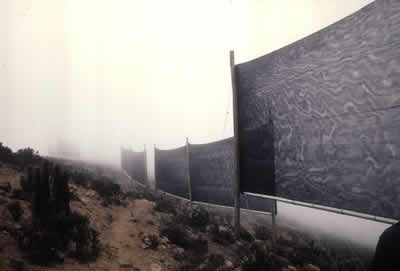
The Atacama Desert is one of the driest places on Earth. The lack of water makes life hard, yet more than a million people live there. One place where people get the water they need to survive is from
...more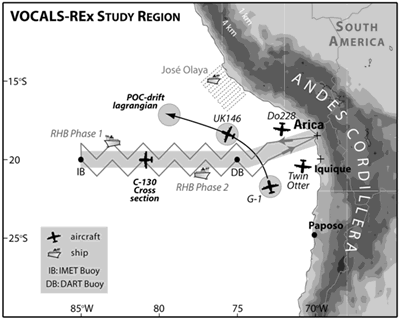
Scientists must work very hard to understand the data collected in field campaigns like VOCALS. They must review and study it to determine what has been learned. Many model runs will be made and analyzed.
...more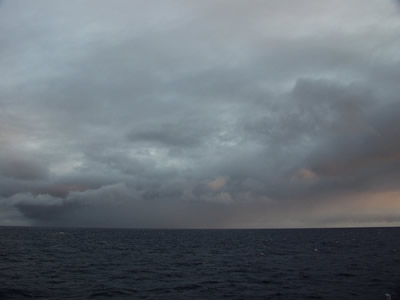
The Southeast Pacific region contains the world's most extensive sheet of stratocumulus clouds. These clouds extend for almost 2,000 kilometers (1,243 miles) off the west coast of South America from central
...more














